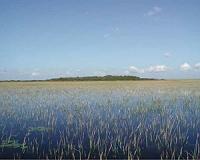| . |  |
. |
Gothenburg, Sweden (SPX) Mar 25, 2011 The Pacific oyster was discovered in large numbers along the west coast of Sweden in 2007. The mortality rate in some places during the past two winters has been 100%, but researchers at the University of Gothenburg who have studied the Pacific oyster can now say that the species copes with cold winters and is here to stay. The Pacific oyster has proved to be tolerant of low temperatures. Large populations of the oyster remained after the harsh winter of 2009/2010. In 18 locations studied along the Bohuslan coast, the mortality rate ranged between 32% and 100%, and averaged 84%. he survival rate for the oysters increased with increasing depth. Some oyster sites consequently still have large populations of living oysters. "Pacific oysters that were exposed to low air temperatures by low water levels or were frozen in ice died during the first winter (this could refer to the winter 2007, change to the first of the two latest winters, or something similar?), while those that were beneath the ice coped well," says the researcher �sa Strand of the Department of Marine Ecology at the University of Gothenburg. This year's winter (December to February) was warmer than last year, and the water level was generally higher. No major mortality can therefore be expected this winter, as those oysters that would be in the risk zone already died last winter. However, Pacific oysters born in 2010 are at great risk of dying during the winter if they have settled in shallow water. Strand and her colleagues will therefore study morality after this year's winter at the end of May and beginning of June. The fact that the Pacific oyster survived the winter of 2009/2010 means that it is, in all probability, here to stay.
Share This Article With Planet Earth
Related Links University of Gothenburg Water News - Science, Technology and Politics
 Ancient Trash Heaps Gave Rise To Everglades Tree Islands
Ancient Trash Heaps Gave Rise To Everglades Tree IslandsSanta Fe NM (SPX) Mar 23, 2011 Garbage mounds left by prehistoric humans might have driven the formation of many of the Florida Everglades' tree islands, distinctive havens of exceptional ecological richness in the sprawling marsh that are threatened by human development. Tree islands are patches of relatively high and dry ground that dot the marshes of the Everglades. Typically a meter (3.3 feet) or so high, many of th ... read more |
|
| The content herein, unless otherwise known to be public domain, are Copyright 1995-2010 - SpaceDaily. AFP and UPI Wire Stories are copyright Agence France-Presse and United Press International. ESA Portal Reports are copyright European Space Agency. All NASA sourced material is public domain. Additional copyrights may apply in whole or part to other bona fide parties. Advertising does not imply endorsement,agreement or approval of any opinions, statements or information provided by SpaceDaily on any Web page published or hosted by SpaceDaily. Privacy Statement |